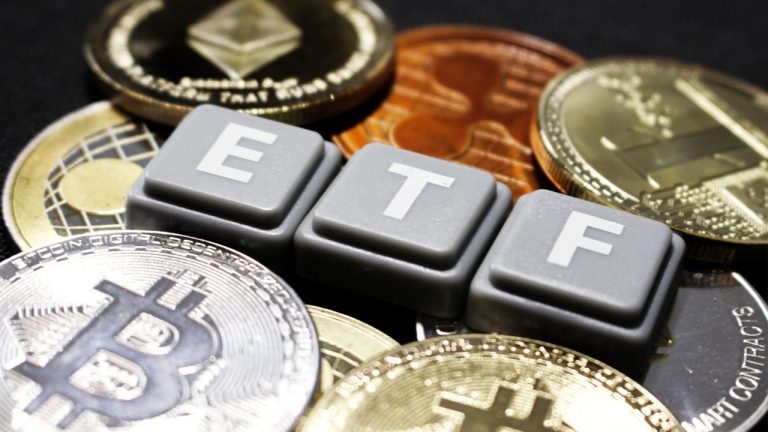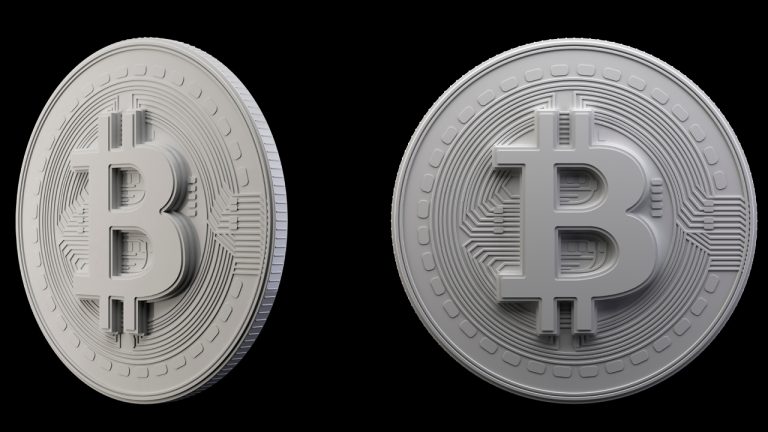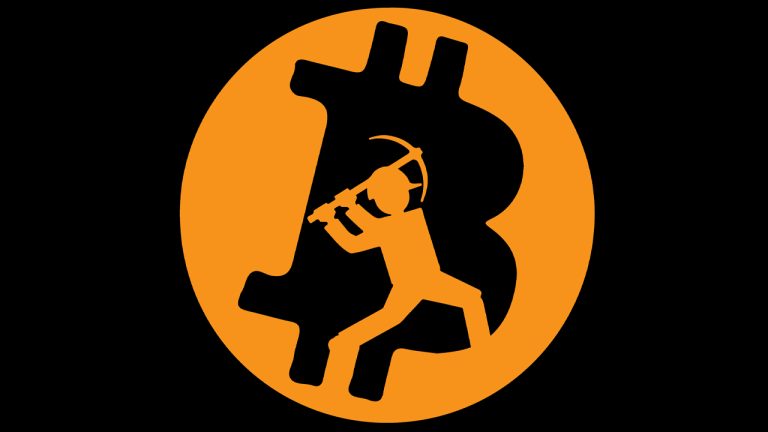 Authorities in Hong Kong have been urged to approve spot bitcoin exchange-traded funds in order to cement the region’s position as the financial hub of Asia. Industry participants believe that launching this ahead of the U.S. will enhance Hong Kong’s status in the global cryptocurrency market. Approving Spot Ethereum ETFs Ahead the U.S. Players in […]
Authorities in Hong Kong have been urged to approve spot bitcoin exchange-traded funds in order to cement the region’s position as the financial hub of Asia. Industry participants believe that launching this ahead of the U.S. will enhance Hong Kong’s status in the global cryptocurrency market. Approving Spot Ethereum ETFs Ahead the U.S. Players in […]
Discover how a reduction in supply affects the price of Bitcoin, and how market participants perceive and react to halving events in the dynamic cryptocurrency market.
Bitcoin (BTC), the pioneering cryptocurrency that sparked a global revolution in digital assets, operates on a unique monetary policy. One of the defining features of Bitcoin is its halving event, which occurs approximately every four years.
This article will explore the economics behind Bitcoin’s halving, examining its effects on price movements and market sentiment. By understanding these factors, investors and enthusiasts can gain valuable insights into the cryptocurrency’s market behavior.
Related: How does the monetary supply affect cryptocurrencies?
A Bitcoin halving, also known as a “halvening,” refers to the predetermined reduction in the rate at which new BTC are created. It is programmed into the Bitcoin protocol and occurs every 210,000 blocks, which is roughly every four years. The halving event halves the block reward, reducing the number of newly minted Bitcoin awarded to miners.

A Bitcoin halving directly impacts the supply and demand dynamics of the cryptocurrency. By reducing the rate at which new BTC enters the market, halving effectively reduces the available supply. As the supply decreases, assuming demand remains constant or increases, basic economic principles suggest that the price of Bitcoin should rise.
Supply and demand is the basic economic principle supporting a price increase in response to Bitcoin’s halving. The law of supply and demand states that prices tend to increase when a commodity’s supply declines, and demand either stays the same or rises. The Bitcoin halving slows the rate of new Bitcoin creation and market release.
As a result, there are fewer newly created BTC available for purchase. The diminished supply produces a scarcity effect, which might push the price upward if demand for Bitcoin stays the same or rises.
Bitcoin’s controlled supply is a key factor contributing to its value proposition. The total supply of Bitcoin is limited to 21 million coins, and the halving mechanism gradually reduces the rate at which new BTC are produced until the maximum supply is reached. This scarcity aspect, coupled with the increasing recognition and adoption of Bitcoin, can create a perception of limited availability and drive up demand, thereby impacting the price.
Halving events have frequently been associated with increases in the price of Bitcoin, with significant upward momentum both before and after previous halvings. For example, during the 2012 halving, Bitcoin’s price soared from about $12 to over $200 in just one year. Similarly, Bitcoin experienced a stunning recovery after its 2016 price halving, reaching a high of about $19,700 in December 2017.
Following the most recent halving event in May 2020, Bitcoin’s price surged. Starting at $8,787 during the halving, the cryptocurrency experienced a remarkable rally, eventually reaching its all-time high of nearly $69,000 in November 2021.
Bitcoin halving events often generate increased market attention and hype. Expectations of lower supply and likely price increases may fuel positive feelings among investors and traders. This optimism could result in higher demand for Bitcoin as traders try to profit from the expected price gain. As a result, a Bitcoin halving can result in the self-fulfilling prophecy of rising market sentiment and demand.
It is crucial to remember that during halving occurrences, market sentiment isn’t always favorable. Market participants may also experience FUD around the potential effects of a price halving. Short-term price swings and heightened volatility may result from this conflicting sentiment.
The Bitcoin halving event may also impact mining economics. Block rewards and transaction fees are the primary sources of income for miners, which are essential to confirming transactions and safeguarding the Bitcoin network.
The decrease in block rewards caused by a halving event directly affects miner profitability. After a halving event, miners operating with increased expenses might find it less profitable to mine Bitcoin, which could result in a drop in mining activity.
Related: ‘Don’t short when it’s dark green’: How to trade the 2024 Bitcoin halving
Bitcoin’s halving may initially impact mining economics, but it also plays a critical role in preserving the network’s long-term security and stability. Miners are encouraged to continue their activities and secure the network through transaction validation due to the carefully managed decline in block rewards.
The network becomes more robust and less dependent on freshly created currencies for security as the mining industry adapts to the decreased block rewards.
Collect this article as an NFT to preserve this moment in history and show your support for independent journalism in the crypto space.

Bitcoin's market dominance index has failed to sustain above 50% since April 2021 — so will this time be any different?
Bitcoin's (BTC) percentage share in the crypto market has risen to nearly 50% in the aftermath of the last week's altcoin market rout.
On June 13, the Bitcoin Dominance Index (BTC.D), which tracks BTC's weight against other cryptocurrencies, reached 49.29%, slightly down from its two-year highs of 49.66% seen earlier this week.

The surge in Bitcoin dominance comes after the United States' Securities and Exchange Commission's (SEC) lawsuit against the crypto exchanges Binance and Coinbase. In its court filings, the commission accused many leading altcoins, including Cardano (ADA) and Solana (SOL), of being "unregistered securities."
Related: SEC’s Gensler says BTC, ETH ‘not securities’ in a newly surfaced video
Bitcoin's market share typically rises during high market stress, given that traders view it as the least volatile, non-stablecoin crypto asset than most cryptocurrencies. For instance, at the height of banking crisis in March 2023, Bitcoin's dominance versus altcoins had also rebounded to 50%.

There's also other cues suggesting Bitcoin's dominance could grow further to finally break 50%.
For instance, DWF Labs, a crypto market maker, has reportedly sent millions of dollars worth of non-Bitcoin tokens to exchanges, this potentially adding selling pressure for certain altcoins.
Independent market analyst Stack Hodler also suggests that most crypto hedge funds would first and foremost abandon their altcoin exposure.
But not everyone is bullish on BTC dominance. Fellow analyst Moustache, for example, argues the altcoin market may have bottomed once again as Bitcoin will be unable to break the 50% mark.
#Bitcoin
— ⓗ (@el_crypto_prof) June 12, 2023
Is the USDT-Dominance about to fall?
If so, we're in for a massive Altseason.
-Head and Shoulders pattern forming (W)?
-Stoch RSI heavily overbought.
In the last 3 years this has led to an Altseason 4 out of 5 times.
+ Sentiment is in the basement for most = Good. pic.twitter.com/odU5jg8srF
Chart technicals suggest that Bitcoin's dominance can indeed drop in the coming weeks as altcoins rebound.
Related: ‘There’s no more exciting time than now’ for Bitcoin: BTC Prague 2023
Most notably, BTC.D has failed to close decisively above the 50%-mark since April 2021, often reversing its gains due to an overbought weekly relative strength index (RSI).

Bitcoin now faces a similar scenario with a retest of the 50% level for the first time since last summer. Meanwhile, its RSI hangs just two points below its overbought level of 70.
Therefore, if history repeats, Bitcoin's dominance will decline toward 39% by late 2023 or early 2024.
On the other hand, a breakout here will be key for BTC — to reach levels not seen in over two years. For example, analyst Crypto Rover sees a classic bullish continuation setup with 52% being the next major hurdle if such a scenario pans out.
This article does not contain investment advice or recommendations. Every investment and trading move involves risk, and readers should conduct their own research when making a decision.
 Over the past four days, there has been a surge in Ordinal inscriptions, and as a result, the BRC20 token economy has experienced significant growth with over 10,000 additional coins. The current value of the BRC20 token economy now stands at $497.75 million, comprising a total of 24,677 distinct tokens. Bitcoin Users Issued More Than […]
Over the past four days, there has been a surge in Ordinal inscriptions, and as a result, the BRC20 token economy has experienced significant growth with over 10,000 additional coins. The current value of the BRC20 token economy now stands at $497.75 million, comprising a total of 24,677 distinct tokens. Bitcoin Users Issued More Than […]
Bitcoin was not subject to U.S. government selling this week, analysis shows, but BTC price action remains pressured.
Bitcoin (BTC) struggled to recover from fresh losses on May 11 as a false alarm over United States government sales spooked markets.

Data from Cointelegraph Markets Pro and TradingView showed BTC/USD circling $27,400 at the time of writing.
The pair had seen a flash sell-off the day prior, briefly taking it to $26,850 after claims that confiscated BTC held by the U.S. government was being sold off.
This was subsequently disproved, but for already sensitive crypto markets, the damage was done.
Glassnode not showing any decline in the US Government's Bitcoin balance
— Will Clemente (@WClementeIII) May 10, 2023
4 pic.twitter.com/rJHcQ2B8Kc
Among traders, Jackis described the local lows as a “scam” move, while forecasting lower levels to come.
“When the move feels like a scam and trades likes a scam then treat it like it,” he tweeted.
“I do expect a breakdown lower sooner or later. I'm not yet sure how deep but prepared to act quickly if neccessary.”
Fellow trader Anbessa also confirmed that he was looking for further downside, like various others focusing on a target zone around the $25,000 mark.
#Bitcoin Roof Pattern
— AN₿ESSA (@Anbessa100) May 11, 2023
Consolidation at neckline $27369
after nailing all shorts starting from $30,4k
1.LONG breakout $27666 if you're tethered or
2.LONG here with a Stop Loss sub $27269
HTF pattern breakout above $28882
while I'm still looking for a throwback to $25,2k… pic.twitter.com/TYZXGyxNFz
Financial commentator Tedtalksmacro meanwhile called May 10 “just another day in crypto.”
In a Twitter summary of the day’s events, he added that U.S. inflation data had delivered for risk asset bulls, implying ongoing declines to come in the next few months.
In a silver lining for Bitcoiners, the past 24 hours saw a major shift in on-chain transaction fees, these deflating considerably after reaching levels which had caused widespread uproar.
Related: Binance ‘FUD’ meets CPI — 5 things to know in Bitcoin this week
Live numbers from Mempool.space had next-block fee rates at 47 satoshis per byte at the time of writing, or just $1.80.
According to data from monitoring resource BitInfoCharts, even on May 10, the average fee had fallen below $15 — a drop of over 50% versus the day prior.
Reacting, Checkmate, lead on-chain analyst at Glassnode, took to task those who had called for code-changing measures to prevent fees from rising so heavily in future.
As Cointelegraph reported, fees had surged as a result of ordinals inscriptions greatly increasing on-chain activity and demand for block space.
“24hrs later, the average fees paid per block has returned to ~1.0 $BTC per block. Imagine arguing to change Bitcoin rules for a short-term fee spike due to people using the chain in ways you don't agree with,” he tweeted alongside a chart.
“Trying to change the rules is the attack, not the inscriptions.”

Magazine: Unstablecoins: Depegging, bank runs and other risks loom
This article does not contain investment advice or recommendations. Every investment and trading move involves risk, and readers should conduct their own research when making a decision.
The total crypto market cap has been ranging sideways, but Bitcoin derivatives markets indicate pro traders don't expect any major price corrections.
For the past 14 days, cryptocurrency markets have been trading within an unusually tight 7.1% range. In other words, investors are unwilling to place new bets until there’s additional regulatory clarity, especially in the United States.
The total crypto market capitalization fell by 1% to $1.2 trillion over the seven days ending May 4, primarily as a result of Bitcoin's (BTC) 1.1% price decline, Ether's (BTC) 0.2% loss, and BNB trading down 1.4%.

Notice that the exact same $1.16 trillion to $1.22 trillion total market cap range previously stood for twelve days between March 29 and April 10. The conflicting forces: regulatory uncertainty weighing it down and the banking crisis pushing prices upward are likely the reason for the lack of risk-appetite on both sides.
The Coinbase exchange, for instance, has been battling the U.S. Securities and Exchange Commission (SEC) regarding the need for clear rules for trading digital assets. The stakes were raised after the exchange was handed a Wells notice, a "legal threat" for "possible violations of securities laws", on March 22.
However, the latest decision has been favorable to Coinbase, as the court has instructed the SEC to clarify the security rules for digital assets within ten days.
On the other hand, the banking crisis seems not to have faded after the lender PacWest Bancorp reportedly announced that it was considering a buyout. The regional financial institution held $40 billion in assets, although some 80% of the loan book is dedicated to the commercial real estate and residential mortgages — a sector that has been plagued by rising interest rates.
The recent crypto sideways trend suggests that investors are hesitant to place new bets until there’s more clarity on whether the U.S. Treasury will continue injecting liquidity to contain the banking crisis, which favors inflation and positive momentum for scarce assets.
Perpetual contracts, also known as inverse swaps, have an embedded rate that is usually charged every eight hours. Exchanges use this fee to avoid exchange risk imbalances.
A positive funding rate indicates that longs (buyers) demand more leverage. However, the opposite situation occurs when shorts (sellers) require additional leverage, causing the funding rate to turn negative.

The seven-day funding rate for Bitcoin and Ether was neutral, indicating balanced demand from leveraged longs (buyers) and shorts (sellers) using perpetual futures contracts. BNB was the only exception, as shorts have been paying 1.4% per week to keep their positions open indicating bearishness.
To exclude externalities that might have solely impacted futures’ markets, traders can gauge the market's sentiment by measuring whether more activity is going through call (buy) options or put (sell) options. Generally speaking, call options are used for bullish strategies, whereas put options are used for bearish ones.
The expiration of options can have a significant impact on the market, particularly if there are a large number of contracts involved. When options contracts expire, the holders of these contracts may choose to exercise their rights, which can result in buying or selling pressure on the underlying asset. This can lead to increased volatility in the price of Bitcoin, which resulted in a $575 million advantage for bulls in the latest April 28 expiry.
A 0.70 put-to-call ratio indicates that put option open interest lags the more bullish calls and is, therefore, bullish. In contrast, a 1.40 indicator favors put options, which can be deemed bearish.

The put-to-call ratio for Bitcoin options volume has been below 0.90 since April 26, indicating a higher preference for neutral-to-bullish call options. More importantly, even as Bitcoin briefly corrected down to $27,700 on May 1, there was no significant surge in demand for the protective put options.
Related: US regional bank shares sink despite Fed calling banking system ‘sound’
The option market shows whales and market makers unwilling to take protective puts even after Bitcoin crashed 7.8% on May 1. However, given the balanced demand on futures markets, traders seem hesitant to place additional bets until there’s clarity on whether the U.S. Treasury will continue to bailout the troubled regional bank sector.
It is unclear whether the total market capitalization will be able to break through the $1.22 trillion barrier. But one thing is for sure: professional traders are not betting on a crypto price crash given that the demand for protective puts has been muted.
This article does not contain investment advice or recommendations. Every investment and trading move involves risk, and readers should conduct their own research when making a decision.
 Pepe (PEPE), the meme coin featuring the popular character Pepe the Frog, has experienced a significant surge in value in the past week, rising by 152.9% against the U.S. dollar. Recent statistics indicate that PEPE’s market capitalization has surged from $141 million on April 22 to a current valuation of $303 million. PEPE Jumps 99% […]
Pepe (PEPE), the meme coin featuring the popular character Pepe the Frog, has experienced a significant surge in value in the past week, rising by 152.9% against the U.S. dollar. Recent statistics indicate that PEPE’s market capitalization has surged from $141 million on April 22 to a current valuation of $303 million. PEPE Jumps 99% […]
If Bitcoin price breaks above $30,000, several altcoins such as SOL, ATOM, ICP and HBAR are well-positioned for a rally of their own.
Risky assets marginally extend their up-move in April. The S&P 500 Index rose around 1.5% in April while Bitcoin (BTC) is on track to end the month with gains of more than 4%. Could the rally continue in May or is it time for a pullback?
The recovery could face headwinds if the United States banking woes escalate further. JPMorgan Asset Management chief investment officer Bob Michele said in an interview with Bloomberg that the turmoil at First Republic Bank is unlikely to be limited to the bank only, and could cause a domino effect.

If that happens, then the U.S. equity markets may witness a correction. However, it is difficult to predict how Bitcoin will react to such a crisis because, in the past few days, BTC price rose while legacy banking troubles deepened. But in case of a major upheaval in the U.S. banking sector, it is possible that Bitcoin will also face a correction sooner or later.
In the near term, Bitcoin and select altcoins are showing strength. Let’s study the charts of five cryptocurrencies that may outperform over the next few days.
After two days of low volatile trading in Bitcoin, the bulls are trying to assert their supremacy on April 30.

The 20-day exponential moving average ($28,783) has started to turn up gradually and the relative strength index (RSI) is in the positive zone, indicating that the path of least resistance is to the upside.
If bulls kick Bitcoin's price above $30,000, the BTC/USDT pair may climb to the overhead resistance zone of $31,000 to $32,400. Buyers may face formidable resistance at this zone but if it is crossed, the pair can soar toward $40,000.
The 50-day simple moving average ($28,026) is the important support to keep an eye on. If BTC price collapses below this level, the bears will sense an opportunity and try to sink the pair to $25,250.

The bears tried to yank the pair below the 20-EMA but the bulls held their ground. This may have attracted further buying and the bulls will next try to drive the price above $30,000. If they succeed, Bitcoin can rise to $30,500, or even $31,000.
Conversely, if the price turns down and breaks below the 20-EMA, it will suggest that bears are selling near overhead resistance levels. The pair may then slip to the 50-SMA.
The bulls will try to protect this level but if bears overpower them, the next stop is likely to be $27,000. Buyers are likely to defend the zone between $27,000 and $25,250 with all their might.
The bulls did not allow Solana (SOL) to break back below the downtrend line during the most recent leg of the correction, indicating demand at lower levels.

Buyers will next try to propel the price to the overhead resistance at $27.12. This remains the key resistance to watch for in the near term because if bulls catapult the price above it, the SOL/USDT pair may accelerate toward $39.
This bullish view could invalidate in the near term if the price turns down and breaks below the moving averages. The pair could then plummet to the crucial support at $18.70. If the price rebounds off this level, it will signal that the pair may oscillate inside the large range between $18.70 and $27.12 for some time.

The moving averages on the 4-hour chart have started to turn up and the RSI is in the positive territory, indicating that buyers are in control. The bears are trying to stall the recovery at $24 but if bulls overcome this barrier, the pair may pick up momentum and rally toward $25.50.
If the bears want to prevent the rally, they will have to quickly tug the price back below the 20-EMA. The 50-SMA will be the support level to watch here if price begins to slide.
The long tail on Cosmos’ (ATOM) April 26 candlestick shows that the bulls are fiercely defending the support at $10.20.

Buyers have pushed the price above the moving averages and will try to reach the downtrend line. This is an important level to keep an eye on because a break and close above it will open the doors for a potential rally to $13.50 and then to $15.50.
On the other hand, if the ATOM/USDT pair reverses direction from the downtrend line, it will suggest that bears are trying to form a descending triangle pattern. A decline below the moving averages will open the doors for a possible retest of $10.20.

The 20-EMA on the 4-hour chart has turned up and the RSI is near the overbought zone, indicating that bulls are in control. There is a minor hurdle at $12.13 but that is likely to be crossed. ATOM price may then rise to test the downtrend line.
Instead, if the price turns down from $12.13, the bears will again try to sink the pair below the 20-EMA. If they manage to do that, it will suggest that the buyers may be losing their grip. The pair then risks a slide to the 50-SMA.
Related: ‘Good luck bears’ — Bitcoin traders closely watch April close with BTC price at $29K
Internet Computer (ICP) slipped below the 50-day SMA ($5.38) on April 26 but that proved to be a bear trap. The price turned up on April 27 and started a strong recovery.

The 20-day EMA ($5.74) has started to turn up and the RSI has jumped into positive territory, indicating that bulls have a slight edge. If the price does not give up much ground from the current level or rebounds off the 20-day EMA, it will suggest that the bulls are buying the dips.
That will enhance the prospects of a rally to the downtrend line where the bears will again mount a strong defense. On the downside, a break below the 50-day SMA will tilt the advantage in favor of the bears.

The 4-hour chart shows that the ICP/USDT pair is in a corrective phase. The first support is at the 20-EMA, which is close to the 38.2% Fibonacci retracement level of $6.14. If the price bounces off this support, the pair may rally to $7.23 and eventually to $7.70.
Contrary to this assumption, if the price continues lower and breaks below the 20-EMA, it will suggest that the short-term bulls may be booking profits. That could pull the price to the 50-SMA, which is near the 61.8% retracement level of $5.72.
The bears repeatedly tried to sink Hedera (HBAR) below $0.06 but the bulls held their ground. The failure to break the support attracted buyers who will try to push the price above the downtrend line.

The 20-day EMA ($0.06) is flattening out and the RSI has climbed above the midpoint, indicating that the selling pressure is reducing. If buyers thrust the price above the resistance line, the bullish momentum may pick up and the HBAR/USDT pair could rally to the overhead resistance at $0.08.
Contrarily, if the price turns down from the current level or the resistance line, it will suggest that the bears remain active at higher levels. That increases the possibility of a break below $0.06.

The 4-hour chart shows that the bulls flipped the moving averages into support and have launched an up-move that is likely to reach the resistance line. This level is expected to act as a strong resistance but on the way down, if the pair rebounds off the 20-EMA, it will suggest a change in sentiment from selling on rallies to buying on dips.
The pair may then break above the resistance line and start its journey to $0.07 and subsequently to $0.08. If the bears want to gain the upper hand, they will have to quickly pull HBAR price below the moving averages.
This article does not contain investment advice or recommendations. Every investment and trading move involves risk, and readers should conduct their own research when making a decision.
 Based on present data, within the last four months, a mere three block rewards from the year 2010 have been transferred after 13 years of dormancy. This is due to the fact that dormant wallets from that era are becoming a rarity to behold. The latest expenditure of a 2010 block took place on April […]
Based on present data, within the last four months, a mere three block rewards from the year 2010 have been transferred after 13 years of dormancy. This is due to the fact that dormant wallets from that era are becoming a rarity to behold. The latest expenditure of a 2010 block took place on April […] Bitcoin miners are contending with the fifth network difficulty increase since February 24, 2023, following a 1.72% rise on April 20 at block height 786,240. The network’s difficulty now stands at 48.71 trillion, marking a 22.62% increase over the last 55 days since block height 778,176. Bitcoin’s Difficulty Has Risen More Than 22% Since Block […]
Bitcoin miners are contending with the fifth network difficulty increase since February 24, 2023, following a 1.72% rise on April 20 at block height 786,240. The network’s difficulty now stands at 48.71 trillion, marking a 22.62% increase over the last 55 days since block height 778,176. Bitcoin’s Difficulty Has Risen More Than 22% Since Block […]